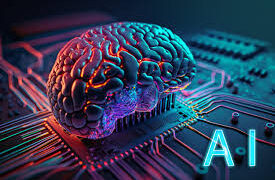Researchers from the Institute of Basic Science (IBS) and Yonsei University in South Korea have developed Nano MIND, the world’s first device for modulating deep brain neural circuits using magnetism.
Magnetogenetic Interface for NeuroDynamics (MIND), the device could unlock future brain functions such as emotion, cognition and even motivation.
Over millions of years of evolution, the human brain has evolved into a complex network of neurons that can handle a large number of tasks in a highly efficient manner.
Startups like Elon Musk’s Neuralink want to tap into this network and unlock the brain’s enormous power to perform certain functions.
However, the human brain is also the center of complex functions such as emotions, social behavior and cognition. These features have been difficult to replicate in artificial intelligence and vary between humans.
The research team, led by Jinwoo Cheon, a professor of biochemistry at Yonsei University, wanted to know if these functions could be precisely controlled using wireless technology.
Magnetism – a proven approach
Medical science is no stranger to the use of magnetic fields for imaging purposes. Unlike technologies such as X-rays, magnetic fields can penetrate tissues without any risk of damage from exposure.
This is why scientists have tried to control brain circuits using magnetism. However, they have not yet achieved great success.
To overcome these problems, scientists from IBS and Yonsei University used magnetized nanoparticles to selectively activate brain regions and their associated circuits.
Using the selective expression of nanomagnetic particles by rotating magnetic fields at precise moments, the researchers achieved spatiotemporal control of neural activity—they could specifically target areas at desired time intervals to obtain only the intended functions.
The researchers demonstrated their technology by selectively activating GABA receptors in the brain’s medial preoptic area (MPOA), which is responsible for the inhibitory control of appetite in mice and rats.
Using their approach, the team was able to activate the pathway’s inhibitory neurons, which increased feeding behavior and appetite by 100 percent in the mice tested.
When the GABA receptor was activated, feeding behavior decreased by 50 percent, and the researchers observed a decrease in appetite in the mice.
The technology was successful not only in feeding but also in modulating the behavior of mice that had never been mothers. When activated, these mice displayed nurturing behavior towards the pups. They brought them to their nests, which only mice that are mothers do.




















